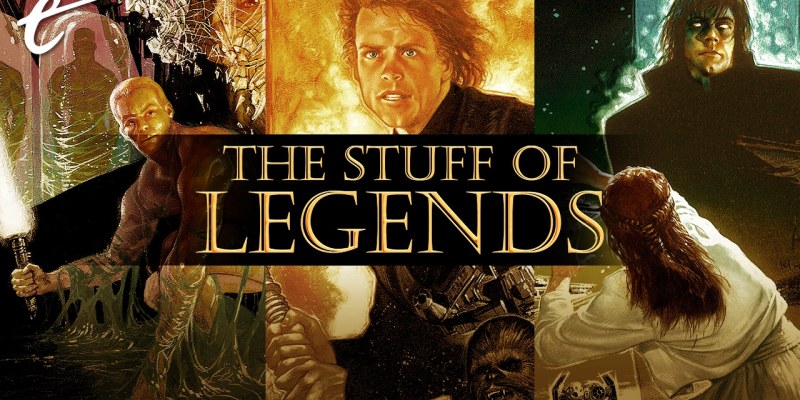There are many people over the decades from the ‘90s onwards who deserve considerable credit for keeping Star Wars alive. Where George Lucas left his fandom divided, the caretakers of the Expanded Universe achieved in many ways what the films couldn’t. One of the most important among those fantastic Star Wars creators is none other than Tom Veitch, who sadly passed away this month.
You might not know Veitch by name, but his work is everywhere in modern Star Wars. When the Expanded Universe renaissance was only just beginning, Veitch’s work on Star Wars: Dark Empire and Star Wars: Tales of the Jedi set the stage for the most prominent eras in the expanded saga. Dark Empire explored the galaxy beyond the Thrawn trilogy as the Republic strived to survive, while Tales of the Jedi finally showed us the Old Republic at its most fantastical.
And the majority of it has been awkwardly borrowed by the Disney canon, to middling effect. Star Wars: Dark Empire sees the Republic put on the back foot as a clone of the Emperor and his emotionally unstable proteges try to restore his Empire. While the sequel trilogy borrows a bit from the Junior Jedi Knights YA novels, virtually every major story element can be found in Dark Empire.
Palpatine’s agenda prioritizes targeting a child of the Solos. Leia isn’t a full-fledged Jedi yet wields the Force. Luke spirals down a dark path, nearly losing his way. New heroes from a corrupt backwater world join all our favorites. The resurgent Empire wields new technologies and immense ships with the power to decimate the Republic in the blink of an eye. The center of galactic civilization is decimated by the Empire’s forces. There are even long-distance Force-powered conversations.
The key difference is that Veitch’s series has a cohesive arc. Set six years after Return of the Jedi, it closes the door on the original trilogy’s conflict while opening the door to future adventures. Palpatine’s resurrection isn’t a nostalgic callback, but a consequence of the New Republic’s hesitance to restore order. When the Imperial warlords start tearing each other apart, the Republic takes a backseat, which permits Palpatine’s rise to power.

From there, Star Wars: Dark Empire offers a thesis on how the saga needs to evolve. It digs into why the Empire failed due to the Dark Side’s reliance on fear, as well as why the heroes need to embrace bravery without losing sight of their goals.
Dark Empire embraces the core tenets of temperance at the heart of the Jedi code, while also critiquing it for its stoic isolationist viewpoint. It’s only by standing united that Leia is able to save Luke from Palpatine’s thrall. In his final moments, we see that even a mastermind like Palpatine can give in to fear, scrambling in vain to possess Leia’s final son, Anakin Solo.
Notably and impressively, Dark Empire takes the smaller scale of the sequel trilogy and harnesses it to greater effect. The story spans a small spread of locations, relying on longer, singular battlefronts like Mon Calamari and Byss. We see the ebb and flow of the conflict as the battles spiral forth, decisive actions from both sides rather than single glimpses. It feels like a genuine war. Palpatine’s plan makes sense, evolving his Empire into a self-perpetuating machine fueled by factory superweapons.
Most importantly for future stories, this emphasis on cloning is nipped in the bud quite succinctly by Veitch. While Palpatine cheats death a few times over the course of the Dark Empire trilogy, it’s only by the skin of his teeth. There are no genetically engineered intermediaries, merely acolytes that serve his needs. His end is poetically pathetic, dragged into the Force equivalent of hell by a Jedi Knight to seal the twisted man’s spirit away forever.

This complexity is belied by a certain campiness to the writing – several portions of the script have aged considerably. Yet, even this older style hearkens back to Star Wars’ inspirations. It feels like it belongs in the same universe as the original trilogy and the Thrawn saga, rather than a generation away from it. Granted, this is the benefit of not being a film reliant on aging actors, but that was part of the charm to the Expanded Universe. It could carry on where the films couldn’t, and it didn’t need creepy body-double CGI to do it.
This is all the more obvious in Tales of the Jedi, which delves even deeper into Veitch’s analysis of the Jedi way. The central protagonist, Nomi Sunrider, at times goes so far as to refuse to wield a lightsaber, instead relying on the Force and empathy. Her daughter Vima even goes on to redeem one of the antagonist Dark Jedi while seeking his training.
In my opinion, that gets at the center of Veitch’s most crucial contribution in his storytelling – redemption through empathy. Rather than simply relying on the setting and bombast to carry the tales along, his stories aim for the heart and soul. His stories speak to the value of caring, the danger of closing yourself off, and the virtue of doing what’s right rather than what’s easy. These messages are foundational to the Star Wars saga.
Whether it’s for his ideas or the philosophy of his stories, Tom Veitch deserves to be remembered. His works aren’t perfect, but they are beloved enough that fans are recreating his most famous work in hand-animated form. It’s a well-deserved tribute not only to Veitch, but the beautiful art of Cam Kennedy and Jim Baikie, who each captured the setting in a gorgeous ‘80s grunge.
Though he has no more stories to tell us, his work left an undeniable mark on the Star Wars galaxy. My thoughts go out to his family. I hope that, in the years to come, someone with creative power at Lucasfilm will come to understand the setting as well as he did.
